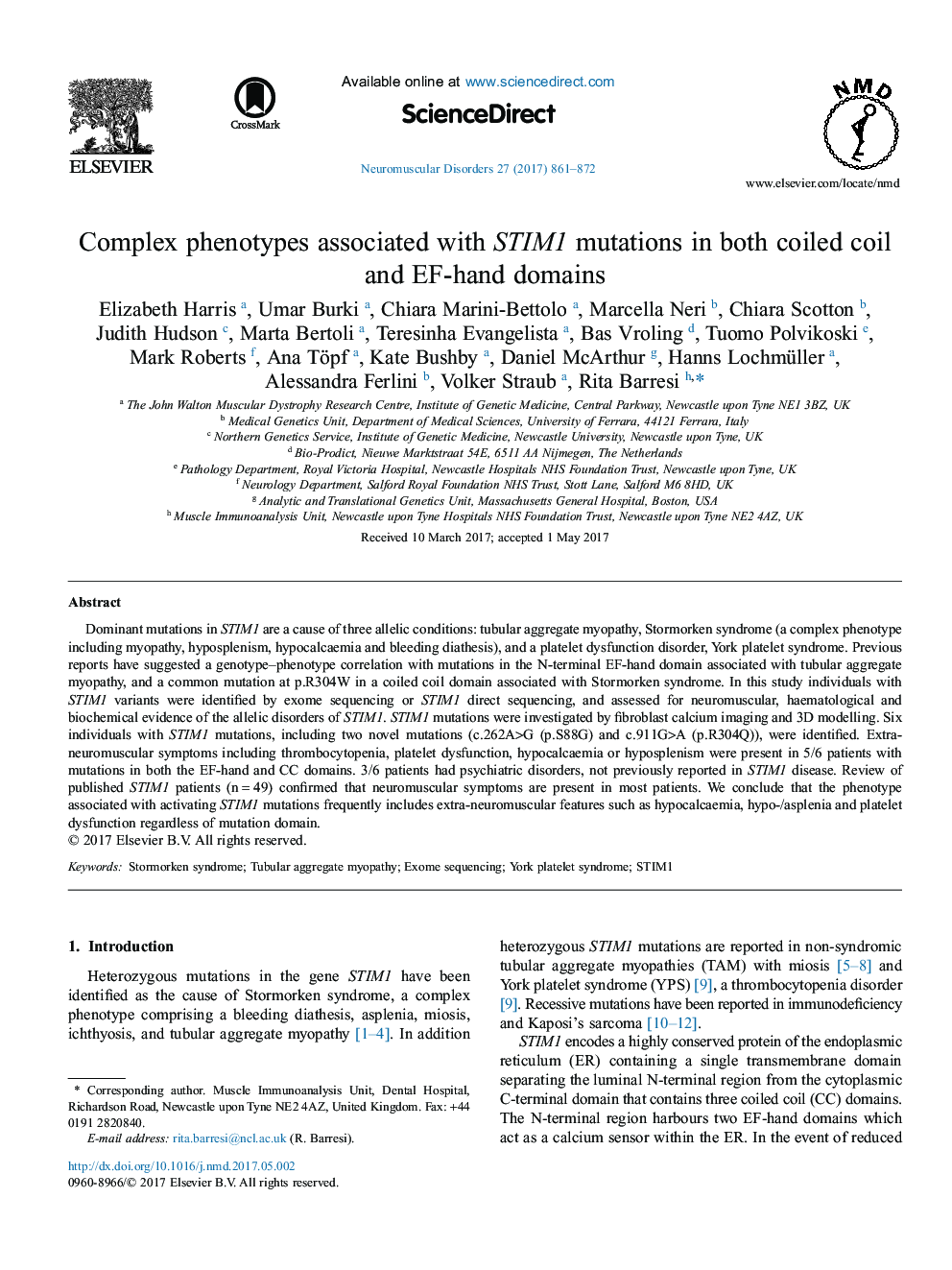| کد مقاله | کد نشریه | سال انتشار | مقاله انگلیسی | نسخه تمام متن |
|---|---|---|---|---|
| 5631983 | 1406521 | 2017 | 12 صفحه PDF | دانلود رایگان |

- Six individuals with mutations in STIM1 were identified, two of which are novel.
- Identified STIM1 mutations were in both EF-hand and coiled coil domains.
- Calcium imaging and 3D modelling were used to evaluate novel STIM1 mutations.
- Hypocalcaemia, hyposplenia or platelet abnormalities were present in 5/6 patients.
- There was no genotype-phenotype correlation for extra-neuromuscular features.
Dominant mutations in STIM1 are a cause of three allelic conditions: tubular aggregate myopathy, Stormorken syndrome (a complex phenotype including myopathy, hyposplenism, hypocalcaemia and bleeding diathesis), and a platelet dysfunction disorder, York platelet syndrome. Previous reports have suggested a genotype-phenotype correlation with mutations in the N-terminal EF-hand domain associated with tubular aggregate myopathy, and a common mutation at p.R304W in a coiled coil domain associated with Stormorken syndrome. In this study individuals with STIM1 variants were identified by exome sequencing or STIM1 direct sequencing, and assessed for neuromuscular, haematological and biochemical evidence of the allelic disorders of STIM1. STIM1 mutations were investigated by fibroblast calcium imaging and 3D modelling. Six individuals with STIM1 mutations, including two novel mutations (c.262A>G (p.S88G) and c.911G>A (p.R304Q)), were identified. Extra-neuromuscular symptoms including thrombocytopenia, platelet dysfunction, hypocalcaemia or hyposplenism were present in 5/6 patients with mutations in both the EF-hand and CC domains. 3/6 patients had psychiatric disorders, not previously reported in STIM1 disease. Review of published STIM1 patients (nâ=â49) confirmed that neuromuscular symptoms are present in most patients. We conclude that the phenotype associated with activating STIM1 mutations frequently includes extra-neuromuscular features such as hypocalcaemia, hypo-/asplenia and platelet dysfunction regardless of mutation domain.
Journal: Neuromuscular Disorders - Volume 27, Issue 9, September 2017, Pages 861-872